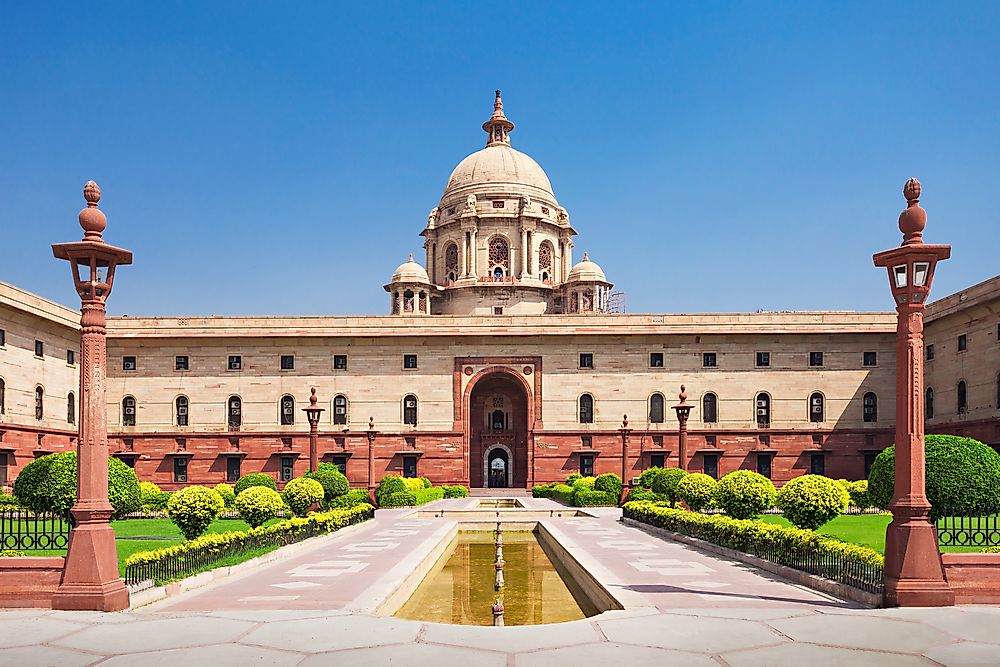What Type Of Government Does India Have?

Government of India
The government of India is considered a parliamentary democracy, which means that the executive branch of government is held accountable to the legislative branch. Under this system of government, India has both a President, who is the Head of State, and a Prime Minister, who is the Chief Executive of the executive branch. This country is politically divided into 29 states and 7 territories. Its government is divided into 3 branches: the legislative, the executive, and the judicial. This same model is used at a state level as well. This article takes a closer look at the branches of government in India.
Legislative Branch
The federal legislative branch of India consists of a bicameral Parliament, divided into two houses: the Council of States and the House of the People.
The Council of States, known as the Rajya Sabha, has a constitutional limit of 250 members. Currently, 245 seats are filled in this parliamentary house. The President may appoint 12 members for their expertise in science, art, social sciences, or literatures. The remaining members are elected by the legislative bodies at the state and territory levels of government. The Council of States may serve for multiple, yet non-consecutive, 6-year terms and every two years, 33% of the members retire.
The House of the People, known as the Lok Sabha, is considered the lower house of Parliament and has a constitutional limit of 552 members. The President may appoint 2 of these members from the Anglo-Indian community, if it is decided that this population is not represented in this legislative body. Other reserved seats include: 84 for representatives of the Scheduled Castes and 47 for representatives of the Scheduled Tribes, both are groups of historically disadvantaged indigenous populations. Representation in the House of the People is further determined by state and territory population size and general election results.
Although the legislative branch is responsible for passing new laws and regulations, its work must be reviewed and approved by the judicial branch before it may become law. The legislative branch does have some authority over the executive branch of government.
Executive Branch
The executive branch is responsible for the daily management of government activities. This branch is made up of the Council of Ministers, who are selected by Parliament, the President of the country, and the Prime Minister.
The President leads the Council with guidance from the Prime Minister and appoints a number of seats, including: state Governors, Attorney General, Chief Justice of the Supreme Court, Chief Election Commissioner, and the Cabinet Secretary. Legally, the President also acts as Commander-in-Chief over the military.
The Prime Minister serves as the Chief of Government, leader of the political party with majority representation in Parliament, an advisor to the President, and the head of the Council of Ministers. This position also has the power to dismiss Ministers and propose new legislation to Parliament.
Judicial Branch
The judicial branch of government is similar to that found in other European countries as it has retained many features from the British colonial era. This branch works independently of the executive and legislative branches. It consists of the Supreme Court of India, the High Courts at the state level, and the District and Sessions Courts at the local level. The leaders of the Supreme Court are appointed by the President, these positions include the Chief Justice and 30 associate judges, who are recommended by the Chief Justice of India.







